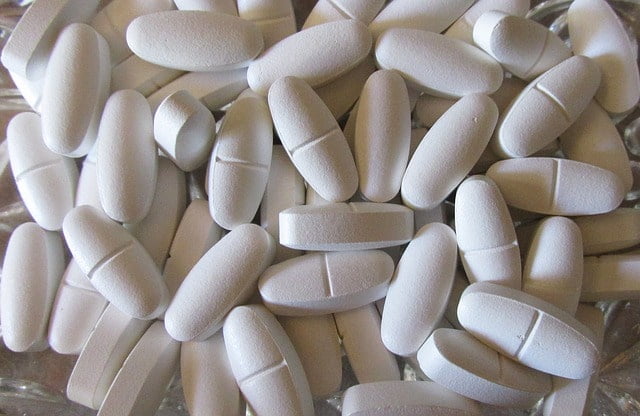What is Calcium?
Calcium is a mineral that is present in your body in abundant quantities. It is an essential element for teeth and bone health. It is usually found in some foods, medicines, dietary supplements, etc.
Calcium is also a vital element responsible for:
- Functioning of nerve
- Regulating normal heart rhythms
- Helps in muscle contraction
- Clotting of blood
Approximately 99% of the calcium present in the body is stored in bones. The left 1% calcium can be seen in muscle, blood, and other tissues. The amount of calcium needed varies with age, gender, and other health conditions.
Follow the article to understand every single and important aspect of this most important mineral for the body’s functioning. So, let’s get started.
What are the Uses of Different Forms of Calcium?
Below here I have listed the uses of different forms of calcium:
| Calcium and its compounds | Uses |
| Calcium | Used as an alloying agent in the process of producing metals. |
| Calcium | Used in the metal extraction process, as a reducing agent. |
| Calcium stearate | Used in the preparation of paints, plastics, cosmetics, and wax crayons. |
| Calcium gluconate | Is considered a food additive. |
| Calcium hydroxide solution | Is used as blackboard chalk. Is Used as Plaster of Paris in its hemihydrate form. |
| Calcium phosphate | Is used in animal feed. Is used as fertilizer |
| Calcium arsenate | Acts as an insecticide. |
| Calcium phosphide | Used in fireworks and flares. Used as a rodenticide. |
| Calcium carbide | Used to prepare acetylene gas. Used to prepare plastics. |
| Calcium carbonate | Used as mineral supplements. Used in the preparation of toothpaste. |
| Calcium carbonate | Widely used in the glass industry. Used in the manufacture of cement. |
What are the Uses And Health Benefits of Calcium?
Calcium has various benefits for your body. The main uses and health benefits of calcium are as follows:
1) Calcium Benefits for Bone Health
About 99% of the calcium in your body is present in the bones and teeth. It is an essential mineral for the growth, development, and maintenance of bone.
As a child grows, calcium contributes to the development of its bones. And when a person stops growing, this mineral continues to help in maintaining the bones and slowing down the loss of bone density, which is a part of the natural aging process.
Females after menopause can lose bone density at a higher rate than males or younger women. These females have a greater risk of developing osteoporosis, and their doctors may recommend them calcium supplements.
2) Benefits of Calcium in Muscle Contraction
Calcium helps to control muscle contraction. Whenever a nerve stimulates a muscle, your body releases calcium. And this calcium helps your muscle proteins to carry out their work of contraction.
When the body pumps out the calcium from your muscle, the muscle will relax.
3) Calcium Benefits for the Cardiovascular System
Calcium is one of the key elements involved in the process of blood clotting. The process of clotting, which is complex, has a number of steps and involves a range of chemicals, including calcium.
This mineral’s role in muscle function also includes sustaining the action of the heart muscle (1). It also relaxes the smooth muscle around blood vessels. Many studies have pointed out a possible link between a high intake of calcium and lower blood pressure.
Vitamin D helps your body absorb calcium, and it is also necessary for bone health.
4) Benefits of Calcium in Weight Control
Calcium may help in weight control.
Some studies have indicated a relation between high calcium consumption and lower body weight. While others have further shown that consuming foods rich in low-fat calcium, within limits of your total calories intake, may decrease your risk of obesity. Calcium may also help in weight loss in obese people.
A study published in the American Journal of Clinical Nutrition in 2012 suggests that this mineral does not have weight control effects until total calories are restricted (2). Also, calcium supplements (in comparison to calcium in your diet) didn’t appear to deliver the same benefits.
Keep in mind that if you are trying to lose weight, make sure you are burning more calories than you are consuming. Your meals should always be well-balanced and full of whole grains, fruits, vegetables, and healthy fats.
5) Benefits of Calcium in Preeclampsia
Preeclampsia is a medical condition that occurs in pregnant women. Its symptoms are:
- Swelling of the hands and feet
- Protein in the urine
Studies have shown the potential benefits of calcium supplements in preventing preeclampsia. One review analysis of 13 clinical trials revealed that consuming 1,000 mg per day of calcium, starting at about 20 weeks of gestation, caused a significant decrease in the risk of preeclampsia, hypertension, and premature births (2).
6) Other Benefits of Calcium
Calcium is a co-factor for various enzymes. Without this mineral, some key enzymes can’t work properly.
Studies have also proposed that sufficient calcium intake can result in:
- Better cholesterol values
- a decreased risk of colorectal adenomas (a non-cancerous tumor)
- lower blood pressure in younger people
- lower blood pressure in those whose mothers have consumed enough calcium during pregnancy
What Are The Side Effects of Calcium?
Below I am explaining to you the side effects of calcium:
1) Some usual and minor side effects of calcium and its supplements intake, when taken in normal doses are constipation, gas, and bloating.
2) Calcium consumption in very high doses may develop kidney stones.
3) There is a mix and match result in the studies about taking calcium supplements along with a diet rich in calcium. The result is an increased risk of heart strokes and attacks. But there is a lack of 100% agreement.
4) Calcium can interact with prescribed medicines for epilepsy, diabetes, heart disease, or other conditions. So, it is beneficial to consult your healthcare provider in such conditions.
5) An overdose of calcium and its supplements may lead to some side effects such as confusion, an irregular heartbeat, belly pain, dry mouth, and nausea. It may even cause death.
Calcium-Rich Foods
Calcium is widely available in dairy products and many other food items including fruits, green leafy vegetables, etc.
Following are the good sources of calcium (3):
1) Green leafy vegetables such as spinach, bok choy, kale, turnip leaves, mustard, collard, etc.
2) Nuts and Seeds, such as almonds, chia, and sesame.
3) Canned sardines, salmon with bones.
4) Tofu, made up of calcium sulfate.
5) Edamame such as young green soybeans.
6) Winter squash.
7) Calcium-fortified fruit juices.
8) Milk
9) Yogurt,
10) Cheese.
11) Many fortified-breakfast-cereals
12) Fortified plant-based milk such as rice milk, soy milk, almond milk.
13) Legumes and grains
14) Dairy products of cow, goat, sheep.
According to studies, some dark green leafy vegetables, like spinach, contain calcium but also have high levels of oxalic acid. Oxalic acid lowers your body’s ability to absorb calcium (4).
Calcium Content of Selected Foods
I have listed below the calcium content of various foods (3):
| Food | Milligrams (mg) per serving | Percent daily value (DV) |
| Low-fat plain yogurt, 8 ounces | 415 | 32 |
| 1 cup calcium-fortified orange juice | 349 | 27 |
| Low-fat fruit yogurt, 8 ounces | 344 | 27 |
| Part-skim mozzarella, 1.5 ounces | 333 | 26 |
| Sardines, canned in oil, with bones, 3 ounces | 325 | 25 |
| 1 cup non-fat milk * | 299 | 23 |
| 1 cup calcium-fortified soymilk | 299 | 23 |
| 1 cup whole milk (3.25% milkfat) * | 276 | 21 |
| ½ cup Firm tofu made up of calcium sulfate ** | 253 | 19 |
| 3 ounces of salmon, pink, canned, solids with bones | 181 | 14 |
| 1 cup cottage cheese (milk fat 1%) | 138 | 11 |
| ½ cup soft tofu made up of calcium sulfate ** | 138 | 11 |
| ½ cup cooked soybeans | 131 | 10 |
| 1 serving of Breakfast cereals, fortified with 10% calcium DV | 130 | 10 |
| ½ cup boiled and drained spinach | 123 | 9 |
| ½ cup soft serve of vanilla frozen yogurt | 103 | 8 |
| ½ cup fresh and boiled turnip greens | 99 | 8 |
| 1 cup fresh and cooked kale | 94 | 7 |
| 1 tablespoon of chia seeds | 76 | 6 |
| 1 cup raw and shredded Chinese cabbage (bok choi) | 74 | 6 |
| ½ cup canned and drained beans, pinto | 54 | 4 |
| Tortilla, corn, one, 6” diameter | 46 | 4 |
| 2 tablespoons of reduced-fat sour cream | 31 | 2 |
| 1 slice of whole-wheat bread | 30 | 2 |
| 1 cup raw and chopped kale | 24 | 2 |
| ½ cup raw broccoli | 21 | 2 |
| 1 medium golden delicious apple with skin | 10 | 0 |
* Calcium content varies slightly by fat content; i.e. the more fat is present in the food, the lesser calcium it contains.
** Calcium content is for tofu processed with a calcium salt. You should note here that tofu processed with other salts does not give significant amounts of calcium.
Daily Calcium Requirement by Age
Below here I am explaining to you the daily calcium requirement by age according to the office of Dietary Supplements (ODS) (3):
| Age | Male | Female |
| 0 to 6 Months | 200 mg | 200 mg |
| 7 to 12 Months | 260 mg | 260 mg |
| 1 to 3 Years | 700 mg | 700 mg |
| 4 to 8 Years | 1000 mg | 1000 mg |
| 9 to 13 Years | 1300 mg | 1300 mg |
| 14 to 18 Years | 1300 mg | 1300 mg |
| 19 to 50 Years | 1000 mg | 1000 mg |
| 51 to 70 Years | 1000 mg | 1200 mg |
| >70+ Years | 1200 mg | 1200 mg |
| Pregnant Women | 1000 to 1300 mg (varies with age) | |
| Lactating Women | 1000 to 1300 mg (varies with age) |
There is an additional calcium requirement for people with the below condition:
- Following a vegan diet
- Having cow’s milk allergy or lactose intolerance
- Stop menstruating because of excessive exercise or anorexia nervosa
- Started menopause
But it should be done with the recommendation of a healthcare professional.
What are the Symptoms of Calcium Deficiency (or Hypocalcemia)?
Calcium deficiency refers to the inadequate amount of calcium in the blood. The name used for the illness of calcium deficiency is known as Hypocalcemia. It can be acute and chronic as well.
There are various signs and symptoms with which a person can know about the low level of calcium in their body. The symptoms may vary depending on the severity and several other factors. Hypocalcemia symptoms may be unnoticeable, mild, serious, and even life-threatening.
The Symptoms of Hypocalcemia include:
- Muscle cramps and spasms
- Tingling and numbness in hands, feet, and face
- Fatigue
- Abnormal heart rhythm
- Seizures or hallucinations
- Osteoporosis and Osteopenia
- Memory loss and confusion
- Dry skin
- Rickets (if coupled with vitamin D deficiency)
- Tooth decay and gum disease
- Premenstrual syndrome (PMS)
- Weak nails
- Slower hair growth
- Fragile and thin skin
- Easy fracturing of bones
- Poor appetite
- Chronic renal failure
- Cardiovascular diseases, and in worst cases
- Death
There are wide effects of Hypocalcemia on all body parts.
The usual range of calcium in an adult body is somewhere between 8.5 – 10.5 mg/dl.
The amount of calcium in human blood under 8.5 mg/dl is generally referred to as hypocalcemia. When the level of calcium drops below the range of 7 mg/dl, the deficiency is considered severe.
There might be a slight difference in the value of calcium levels in blood from one lab to another.
What are the Causes of Calcium Deficiency (or Hypocalcemia)?
The following lifestyle habits or conditions may cause low calcium levels, also known as hypocalcemia:
1) Vitamin D Deficiency
The most common cause of hypocalcemia is Vitamin D deficiency. The body not getting enough Vitamin D either from the sun or any other supplements may develop Calcium deficiency.
2) Not Getting Enough Calcium
Not involving the RDA (recommended daily intake) of calcium in the diet may also result in lower levels of calcium in the blood.
Always remember that certain substances in your diet can lower absorption, or increase calcium loss. These are (3):
Alcohol: It reduces calcium absorption and restricts vitamin D production
Antinutrients (phytic acid, oxalic acid): These bind calcium in the gut
Caffeine: It reduces the absorption and increases calcium loss
3) Hypoparathyroidism (Low PTH) or Underactive Parathyroid Gland
Parathyroid hormone (PTH) has a deep connection with calcium blood levels. Whenever there is a decrease in the level of calcium in the blood, cells in the parathyroid gland release PTH.
PTH is responsible for raising the level of blood calcium by absorbing more calcium from the kidney and guts. So, a low PTH level may also result in a decreased level of Calcium in the blood.
4) Gut Disorders
Any disease or disorder that hinders the absorption of calcium in the gut may result in hypocalcemia. Examples of such gut disorders may include inflammatory bowel diseases, chronic diarrhea, etc.
5) High Phosphorus Levels
Phosphorus binds calcium and reduces the level of active or ionized calcium. Therefore, the sudden increase in phosphorus level may result in calcium deficiency.
6) Abnormal Magnesium Levels
Hypocalcemia can also be caused by an insufficient level of magnesium in the body. Abnormal magnesium levels hinder the functioning of parathyroid hormone (PTH) and result in decreased calcium levels (5).
While another study shows that high magnesium levels can also suppress PTH release, and as a result decrease calcium levels (6).
7) Low Protein Levels
Low protein levels mainly albumin also becomes the cause of decreased calcium levels. This majorly happens due to infections, malnutrition, alcoholism, and liver disease.
8) Kidney Disease
A damaged or ineffective kidney retains the least amount of calcium. It makes more calcium thrown out with the urine.
Also, damaged kidneys produce less active vitamin D, which results in lower absorption of calcium in the gut.
Therefore, any kidney defects may lead to hypocalcemia.
9) Menopause
The menopause cycle in women leads to changes in the production of estrogen, PTH, and other hormones. Women’s bodies are less prone to get calcium from dietary sources because of the lowering of estrogen production.
10) Pancreatitis
Some theory proves that Pancreas inflammation or Pancreatitis often results in a deficiency in calcium blood level.
11) Genetic Disorders
Certain rare genetic disorders may also result in low calcium levels (7).
12) Certain Drugs
The use of some medications such as laxatives, glucocorticoids, and anticonvulsants may result in hypocalcemia.
What are the Symptoms of Calcium Toxicity or Hypercalcemia?
Contradictory to hypocalcemia, hypercalcemia is the condition when the calcium level in the blood reaches above the normal range (8.5 to 10.5 mg/dl).
Rarely any symptoms of hypercalcemia are visible in the body, but sometimes visible symptoms include:
- Muscle aches
- Weakness
- Muscle Cramps/ twitches
- Lethargy
- Depression
- Irritability or memory loss
- Nausea
- Vomiting
- Constipation
- Decreased appetite
- Fatigue
- Bone pain
- Headaches
- Forgetfulness
- More frequent feelings of thirst and urination
What are the Causes of Calcium Toxicity or Hypercalcemia?
Below here I have listed the causes of calcium toxicity or hypercalcemia:
1) Overactive Parathyroid Glands (Hyperparathyroidism)
The parathyroid glands help in controlling calcium levels in the blood. If these glands become overactive, this may cause hypercalcemia.
These glands become overactive when one of them becomes enlarged or develops a noncancerous growth; this condition is called hyperparathyroidism which is the most common cause of hypercalcemia (8).
Hyperparathyroidism is usually diagnosed in people between the age group of 50 to 60 years and is about 3-4 times more common in females than in males (9).
2) Supplements
Consuming supplements of Vitamin D or calcium more than the prescribed quantity may result in hypercalcemia over a certain period.
3) Medications
The use of certain medications may increase the level of calcium in the blood. For example, for treating bipolar disorder, a drug used is made of lithium and it results in increasing the release of PTH.
4) Severe Dehydration
Not having enough fluid in the blood may more usually result in transient or mild hypercalcemia.
5) Immobility
Immobility in people who have a condition that causes them to spend a lot of time sitting or lying down can lead to hypercalcemia. In the long run, bones that don’t bear weight release calcium into the blood causing increased levels of calcium in the blood.
6) Hereditary Factors
Familial hypocalciuric hypercalcemia is a rare genetic disorder. It generates faulty calcium receptors in the body which develop more calcium in the blood. The hypercalcemia caused due to this condition does not show any symptoms as well as complications.
7) Cancer
Studies show that some cancers such as lung, breast, or blood may develop the risk of a rise in calcium levels. Metastasis (spread of cancer) to bones also increases the risk of hypercalcemia.
8) Other Diseases
Diseases like sarcoidosis and TB increase the level of Vitamin D which result in stimulating your digestive tract and absorbing more calcium.
Final Word
So, here we can conclude that calcium is a vital element for the human body. But it should always be consumed in the right amount. There is a predefined amount of calcium intake according to age and gender.
Consuming it less or more than that level may lead to some minor or severe risks. It is always a better option to check with your doctor to give you a clear idea about the need for calcium in your body.
The healthcare professionals may perform some blood tests etc. to check the quantity of calcium in the blood before prescribing its supplements.
Calcium supplements are also available online for purchase.
————————————————-
References:
1) Calcium Intake and Health
https://www.ncbi.nlm.nih.gov/pmc/articles/PMC6683260/
2) Effects of dairy intake on body weight and fat: a meta-analysis of randomized controlled trials
https://academic.oup.com/ajcn/article/96/4/735/4576839?login=false
3) Calcium
https://ods.od.nih.gov/factsheets/Calcium-HealthProfessional/
4) Bioavailability of soluble oxalate from spinach eaten with and without milk products
https://apjcn.nhri.org.tw/server/APJCN/12/2/219.pdf
5) Hypocalcemia
https://www.ncbi.nlm.nih.gov/pmc/articles/PMC3279267/
6) The influence of hypermagnesemia on serum calcium and parathyroid hormone levels in human subjects
https://pubmed.ncbi.nlm.nih.gov/6709029/
7) Hypocalcemia: Diagnosis and Treatment
https://pubmed.ncbi.nlm.nih.gov/25905251/
8) Hypercalcemia
https://www.ncbi.nlm.nih.gov/books/NBK430714/
9) Primary Hyperparathyroidism
https://www.niddk.nih.gov/health-information/endocrine-diseases/primary-hyperparathyroidism
————————————————-
Disclaimer: This article is intended for informational purposes only. Any information associated with this article should not be considered as a substitute for prescriptions suggested by local health care professionals.
————————————————-
Recommended Articles:
1) Vitamin A: Uses, Benefits, Dose, Rich Foods, Side Effects
2) Zinc (Zn): Uses, Benefits, Food Sources, & Side Effects
————————————————-



